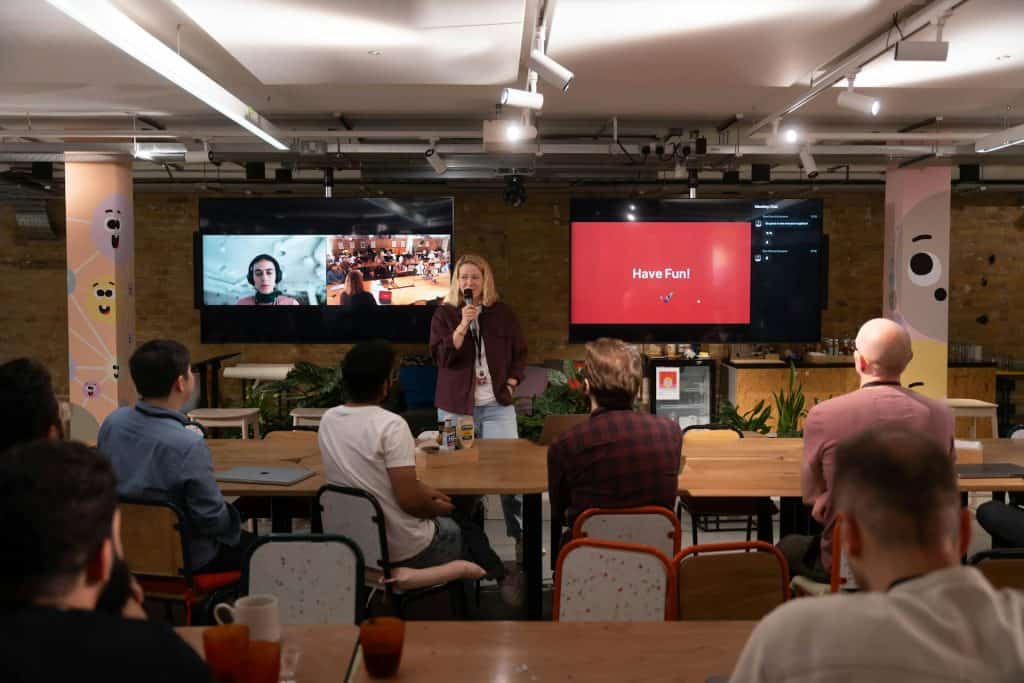Gen AI Can Change Associations Forever—If You Build the Right Gen AI Portal

The integration of Generative AI (Gen AI) into association management offers transformative potential for member engagement, operational efficiency, and professional standards. However, it also brings challenges, including apprehension among staff, volunteers, and members about its implications. Forward-thinking associations are addressing these uncertainties by creating internal Gen AI portals—centralized resource hubs that empower their teams to embrace this technology confidently. These portals demystify Gen AI, equipping association staff and volunteers with tools to enhance their work and further the organization’s mission.
Video: “Gen AI Can Change Associations Forever—If You Build the Right Gen AI Portal”
Podcast: “Gen AI Can Change Associations Forever—If You Build the Right Gen AI Portal”
The Strategic Importance of a Centralized Gen AI Portal
Introducing Gen AI into an association’s operations represents a significant shift in how services are delivered, events are managed, and professional standards are upheld. While leadership might focus on its potential for organizational advancement, staff and volunteers may worry about its impact on their roles. A centralized Gen AI portal can bridge this gap by serving as a transparent, trusted resource for education and support.
Research from McKinsey highlights that organizations prioritizing upskilling during technological transitions are significantly more likely to achieve their goals. For associations, this translates to effectively equipping staff and volunteers to leverage Gen AI tools in areas like event planning, member communications, and professional credentialing.
Beyond education, such a portal can alleviate fears. For example, many staff and even volunteers worry that automation could replace their contributions entirely. A portal emphasizing that Gen AI augments—rather than replaces—human expertise can foster a positive mindset. For associations, where volunteer contributions are vital and they don’t have the financial motivations driving staff, addressing these fears is critical to sustaining engagement.
Core Features of a Gen AI Portal for Associations
To be effective, an internal Gen AI portal must be tailored to the unique needs of associations. Key features include:
1. Educational Resources
A variety of educational materials should cater to the diverse learning preferences of staff and volunteers. Examples include:
- Introductory Guides: Simple explanations of Gen AI concepts with examples relevant to association operations, such as automating event registrations or enhancing member surveys.
- Video Tutorials: Demonstrations on using specific Gen AI tools, like crafting personalized member outreach campaigns or analyzing event feedback.
- Interactive Modules: Gamified lessons and self-paced courses to make learning engaging and relevant to tasks like chapter management or professional standards development.
2. FAQ Section
A comprehensive FAQ section customized to your association is crucial for addressing common concerns and misconceptions, and facilitating risk management. Example questions might include:
- How can Gen AI help us improve member engagement?
- Will Gen AI replace volunteer roles?
- What are the ethical considerations of using Gen AI in credentialing or member services?
Regular updates to the FAQ ensure it reflects evolving questions and builds trust through transparency. Research from Deloitte highlights that frequent communication and transparency are essential for building trust.
3. Feedback and Interaction Tools
A successful portal is dynamic and interactive. Features allowing staff, volunteers, and members to submit questions or suggest new resources reinforce inclusivity and responsiveness.
4. Accessibility and Security
Accessibility across devices ensures widespread adoption among staff and volunteers. Features like single sign-on (SSO) and responsive design make portals easy to use, while robust security measures protect sensitive member data and organizational information.
Case Study: Implementing a Gen AI Portal for a Professional Association
A national professional association focused on advancing healthcare standards recently faced challenges integrating Gen AI into its operations. Leadership identified significant opportunities to improve member communications, streamline certification processes, and enhance conference planning. However, staff and volunteers showed resistance to adopting Gen AI tools.
At that stage, the association engaged me to help them overcome these change management issues. Through employee surveys and small focus groups, we identified several concerns, namely staff felt concerned about job security, while volunteers worried about how to use these tools effectively without undermining professional standards.
We developed a portal to address these concerns. It included specific learning modules demonstrating how Gen AI could:
- Personalize member communications, such as crafting tailored email campaigns based on member specialties or interests.
- Automate routine administrative tasks, freeing staff to focus on strategic initiatives.
- Enhance credentialing processes by analyzing certification data to identify trends and improve program delivery.
Anonymized questions collected during focus groups informed a dynamic FAQ section. Key topics included:
- How does Gen AI impact the integrity of our credentialing programs?
- Can Gen AI help improve member retention and engagement?
- How do we ensure ethical use of Gen AI in professional settings?
Given the association’s role in setting professional standards, we included a module on ethical considerations, focusing on:
- Mitigating biases in AI-driven decision-making.
- Ensuring transparency when using AI in member-facing applications.
- Aligning Gen AI use with the association’s values and mission.
We incorporated tools allowing users to suggest new resources or flag unclear content, ensuring the portal evolved alongside user needs.
To drive adoption, we launched the portal alongside a live training webinar, followed by email campaigns featuring success stories from staff and volunteers who quickly embraced the technology. Within six months:
- 85% of staff and volunteers reported increased confidence in using Gen AI tools.
- The time spent on administrative tasks by staff decreased by 40%, allowing them to focus on strategic initiatives like expanding professional development programs.
- Member satisfaction scores improved, with personalized communications and more efficient credentialing processes receiving particular praise, and member retention rose by over 20%.
The Broader Implications for Associations
A Gen AI portal does more than address immediate concerns; it fosters a culture of innovation and continuous learning. For associations, this can lead to:
- Improved Member Engagement: Staff and volunteers equipped with Gen AI tools can deliver more personalized and responsive services, increasing member satisfaction and retention.
- Operational Efficiency: Automating repetitive tasks allows staff to focus on strategic priorities, such as expanding programs or developing new standards.
- Volunteer Empowerment: Addressing concerns about job displacement and providing clear guidance on AI applications can sustain and even enhance volunteer engagement.
Furthermore, a well-implemented Gen AI portal signals that the association values transparency and professional development. This can be a decisive factor in attracting and retaining top talent, both among staff and volunteers.
Conclusion
The integration of Gen AI into association operations is inevitable, but its success depends on supporting staff, volunteers, and members through the transition. A centralized Gen AI portal, tailored to the unique dynamics of associations, is a powerful tool for fostering understanding, building confidence, and unlocking the technology’s full potential.
As demonstrated in the case study, such a portal can turn apprehension into opportunity, empowering associations to enhance operations and amplify their impact. By investing in education, transparency, and innovation, association executives can lead their organizations into a future where Gen AI drives both efficiency and engagement, ensuring alignment with their mission and values.
Key Take-Away
A well-designed Gen AI portal empowers associations to turn uncertainty into opportunity—building trust, boosting adoption, and enabling staff and volunteers to confidently integrate Gen AI into their mission-driven work. Share on XImage credit: Viridiana Rivera/pexels
Dr. Gleb Tsipursky was named “Office Whisperer” by The New York Times for helping leaders overcome frustrations with hybrid work and Generative AI. He serves as the CEO of the future-of-work consultancy Disaster Avoidance Experts. Dr. Gleb wrote seven best-selling books, and his two most recent ones are Returning to the Office and Leading Hybrid and Remote Teams and ChatGPT for Thought Leaders and Content Creators: Unlocking the Potential of Generative AI for Innovative and Effective Content Creation. His cutting-edge thought leadership was featured in over 650 articles and 550 interviews in Harvard Business Review, Inc. Magazine, USA Today, CBS News, Fox News, Time, Business Insider, Fortune, The New York Times, and elsewhere. His writing was translated into Chinese, Spanish, Russian, Polish, Korean, French, Vietnamese, German, and other languages. His expertise comes from over 20 years of consulting, coaching, and speaking and training for Fortune 500 companies from Aflac to Xerox. It also comes from over 15 years in academia as a behavioral scientist, with 8 years as a lecturer at UNC-Chapel Hill and 7 years as a professor at Ohio State. A proud Ukrainian American, Dr. Gleb lives in Columbus, Ohio.

